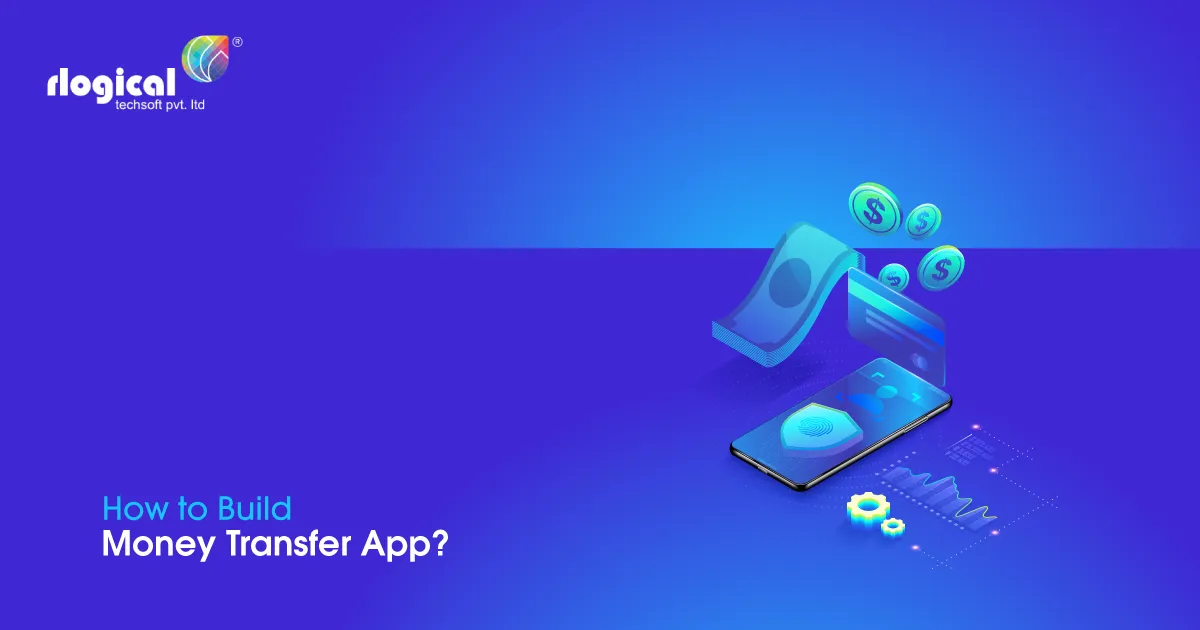
There is no doubt that there is a rapid improvement in the market for money transfer applications at present. It is expected that the volume of online payments in the US will cross the $300 billion mark by the conclusion of the subsequent year. Moreover, in China, it is likely to touch the $6.3 billion mark.
These numbers are astounding. Furthermore, it is estimated that online payments’ net transaction value will be reaching the $4,934,742 million mark in the US.
Thus, it is evident that the market is expanding quite fast, along with entrepreneurs’ opportunities. In case you happen to be one of these individuals who are having a go at money transfer app development, then you have come to the right place. This article is going to help you minimize any possibility of failure in the long run.
Are you aware that approximately 80% of mobile applications are abandoned after one single use only? This signifies that you have to be conscious of the challenges of creating a money transfer application before investing your money into the procedure.
You must focus on various factors that are going into the development of the e-wallet app. Security happens to be amongst the essential parameters which one cannot overlook at any stage.
Cash needs to be transferred between different accounts in a seamless manner irrespective of its purpose or type. Moreover, there is stuff such as the user, transaction, and account details, which have to be encrypted.
The basis of any fund transfer app happens to be security. In case your application can handle information safely, then you should not have any problem. You will be able to confidently challenge the competition with simple-to-use and clean interfaces, lucrative offers, as well as innovative features.
What are the risks involved in the development of a money transfer app?
With the development of mobile payment applications, the number of risks is also quite high. A committed approach will be imperative for tackling these types of threats, beginning in the initial stage of the mobile payment application development procedure. A comprehensive risk assessment, as well as a mitigation plan, needs to be in place.
Below, we have mentioned the possible threats which might be troubling you while creating a money transfer app.
1. Risk of precision or correctness
Everything has to be correct with cash being involved. There ought to be a 100% zero-tolerance policy so far as data accuracy, and quality assurance is concerned. Hackers might attempt to manipulate the information received. The development team needs to be prepared to protect the system from any kind of mischief whatsoever.
2. Risk of privacy
Applications having sensitive information are susceptible to cyber threats such as hacking and data leaks. Hackers will be keeping an eye on these types of applications for using the stored information for their interests, and the apps’ security becomes compromised on most occasions. It is essential to take adequate measures to keep the information safe and protected and avoid any type of illegal access.
3. Risk of conflict
It is possible for the system not to work properly because of a slow Internet connection or technical issues. This might lead to conflicts and anomalies between the transacting systems.
4. Risk of fraud
In online payment systems, frauds are quite common. Everything will be okay as long as the password is entered correctly or the security questions are answered properly. However, there is a possibility of fraud if your information becomes leaked, or somebody close to you can get hold of your info. Consequently, it will be a good idea not to share sensitive data with anybody, including even your close friends. In the past, we have seen cases where the users have been deceived for sharing their passports or OTPs, which has resulted in the emptying of their digital wallets instantly.
Check out: Payment Transfer Application Development
How to make the business of money transfer application development more secure?
Several measures can be taken by a business dealing in money transfer to safeguard its users’ data. Here, we will look at the most typical security measures that a digital wallet app development company can implement to guarantee security to their customers.
1. 2-factor authentication
2-factor authentication is going to be the most commonly used practice. A user has to go through a couple of levels before logging in or before the final cash transfer step. On most occasions, a real-time OTP is going to be sent to the user’s registered email address or mobile gadget.
On some occasions, it happens to be a security question such as your mother’s maiden name or your favorite teacher, whose answer will be unique and will only be known to the account owner. This question will pop up every time a request is made for accessing a digital wallet or logging in.
2. TLS and SSL
Known as TLS (Transport Layer Security) and SSL (Secure Socket Layer), both of these happen to be cryptographic protocols that make use of symmetric and asymmetric encryption techniques for safeguarding user information. The protocols will grant an extra level of security for protecting user data. You can find these on chat messengers such as Whatsapp, where plenty of information is shared regularly.
3. Blockchain technology
Blockchains can be considered a fantastic method of transferring funds between different accounts at low prices, compromising the security front. The security level will be higher when it comes to blockchain technology. It is mainly its decentralized nature that enables anybody across the globe to send and also receive money safely while eliminating any 3rd-party verification services. It is quite tough to hack something written in the distributed and decentralized blockchain ledger, which helps make it extremely reliable and safe.
4. Data Encryption
Data encryption happens to be one more well-known technique for keeping data secure. This information can be accessed by only those involved in a transaction by a hardware device, binary data, or paraphrase keyword. These are known as access keys. Data encryption helps to make the digital payment app development process a completely secure and safe transaction at all times.
5. Biometrics
It will be possible to recognize the device’s ownership with the help of biometrics utilizing Touch ID or Face ID. This helps validate the proper user and enables funds to be transferred to the destination account smoothly and seamlessly. Biometrics is used by apps such as USDX Wallet and Azimo for logging into the app. They likewise come with this astounding feature known as “auto-lock.” The app will become locked automatically after a few minutes of inactivity, and validation is mandatory upon every single re-entry.
6. Address Verification System (AVS)
It is a fact that online commerce can be susceptible to fraud. However, this risk can be reduced to a great extent by the usage of AVS. It functions by verifying the address which is mentioned in the transaction against the address which has been listed at the issuing bank. It will be possible to complete the transaction without any issue once the verification has been completed.
7. On-demand server solution
It is important to monitor the server load. Although it should not be a problem initially, servers incapable might cause interruption of service at later phases. A phased solution will be the most effective way to prevent the exceeding of load on a server. Commencing with the minimal application consisting of the important set of features as the number of market or users becomes more will be a good idea. This is because the overloaded server might lead to slower processing, which might interrupt transactions in the long run.
8. PCI Compliance
Referred to as PCI DSS (Payment Card Industry’s Data Security Standard), it happens to be a set of standards responsible for safeguarding the users from data breaches and online cash transfer frauds. One significant step of the money payment application development process will be to obtain a PCI DSS compliance certificate. Companies that are unable to hold the compliance will be required to submit a substantial fine.
Must Read: What is the process of developing On-Demand Apps?
Conclusion
All these measures mentioned above will ensure that only the account owner can access the account for making transactions. Businesses providing cash transfer mobile application development services should emphasize deploying every possible measure to protect data and maintain privacy, integrity, and confidentiality.
Besides these, being users, you must be very careful while making use of money transfer apps. It is a fact that it would be better to be cautious beforehand.
Below, we have mentioned some useful guidelines that should help the end-users while using mobile payment applications.
– Initiate transactions only to those individuals you’re familiar with
– Maintain the safety of OTPs, verification codes, and other pins
– Lock up the app with a pin or biometric solution or secured password
– Never share codes with anybody
– Download only the most effective fund transfer apps
– Keep the business and personal fund transfer accounts separate
– Invest some time for reviewing the security of the app, as well as privacy policies
– Try to maintain the privacy of transactions
– The transactions should not be posted on social media
Let us hope that all these tips mentioned above will help maintain the safety of your hard-earned money.
Rahul Panchal
Rahul Panchal is the Founder & Managing Director at Rlogical Techsoft Pvt. Ltd. He is a pioneer tech enthusiast who has assisted diverse enterprise solutions with a fresh perspective over the years. From integrating technologies like Full-Stack, .NET, Flutter & PHP, he has harnessed custom web or hybrid mobile app development projects. His creative outlook on the latest models of AI, ML, blockchain, and IoT, has made various businesses attain leading-edge success.
Categories
- All
- AI Development Services
- Amazon Web Services (AWS)
- ASP.Net Development
- Azure Web App
- Big Data Analytic
- Customize
- Digital Marketing
- Drupal Development
- E-commerce web development
- Education Mobile App Development
- Enterprise Application
- Event Management App Development
- Fintech
- Fitness App Development
- Food Delievery
- Front-End Development
- Grocery App Development
- Healthcare App Development
- Hire Dedicated Developers
- Hotel Booking App
- IT Industry
- JavaScript Development
- Mobile App Development
- On Demand App Development
- On Demand Healthcare App Development
- PHP Development
- POS Software Development
- Real Estate Mobile App Development
- Retail Business App Development
- Salesforce
- Social Media Development
- Software Development
- Technology
- Transportation App Development
- UI/UX Design
- Web Design
- Web Development
- Web Services
- Web/Data Scraping Services
- WordPress




 Rahul Panchal in Money Transfer App Development
Rahul Panchal in Money Transfer App Development 





